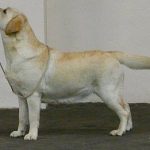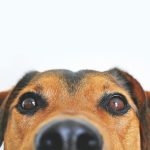
Where does dandruff come from and how to treat it?
Many owners have struggled with their dog’s dandruff problems and wondered where dandruff comes from and how to treat it?
1. Dandruff in a dog – causes and treatment
2. Dry dandruff and greasy dandruff – the most common causes of dandruff
3. Hypothyroidism Causes Dog Hair Disease
Dandruff in dogs – causes and treatment
Dandruff in dogs https://piesotto.pl/blog/dandruff-u-dog/ it’s quite a common phenomenon that almost everyone can diagnose at first glance. Dandruff is dead skin cells that break off as tiny scales. It should not be considered as a normal phenomenon, as dandruff is always a sign of a disorder. If the epidermis peels off, it means that the cells have a too short division cycle, i.e. they die off too quickly and new cells are formed. Dandruff in a dog is treatable, even when its symptoms are caused by another condition, but the cause of dandruff must be diagnosed.
Dry dandruff and greasy dandruff – the most common causes of dandruff
The most common type of dandruff is dry dandruff, which occurs in dogs in combination with itching as well as severe scratching of the dog. Often caused by errors in grooming, or lack thereof, the presence of external parasites, allergies, ringworm, a huge impact on poor diet and stress. Dry dandruff is also associated with various diseases, including Cushing’s syndrome. Hypothyroidism and other endocrine diseases may be the cause of dandruff. Oily dandruff is a little less frequent but itching and skin changes such as eruptions, redness and swellings also occur. This condition can result from bacterial dermatitis, liver dysfunction, inflammation of the sebaceous glands, and food allergies. Also dandruff occurs due to mineral deficiency. Dandruff is another variety, this time caused by external parasites called mites.
Hypothyroidism Causes Dog Hair Disease
Thyroid diseases do not only affect humans, they occur in dogs and it is an ailment that cannot be cured. However, you can take action to minimize the symptoms and improve your dog’s quality of life. If we notice in our dog slowing down, lack of energy, gaining weight quite fast, weakness, lack of desire to play, lack of interest in surroundings – we should make an appointment with vet. In addition, dermatological symptoms are noted in hypothyroid problems and are the reason why the dog most often ends up at the vet. Skin eruptions, unpleasant skin odor, keratinized skin cells, hair loss and discoloration may occur. It should be remembered that treated dogs with hypothyroidism live as long as healthy dogs and a significant improvement in well-being occurs after the first week of treatment.
Proper functioning of the dog’s skin depends largely on us, the owners. If you notice a deterioration of the coat don’t wait for it to go away because this usually doesn’t happen. Let’s go to vet, find out reason of dandruff and try with obvious participation of vet to improve dog’s life comfort.









